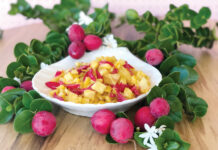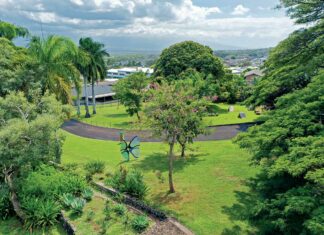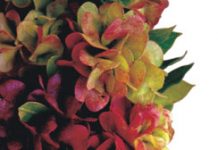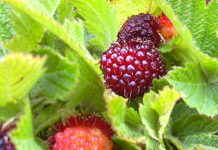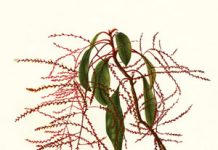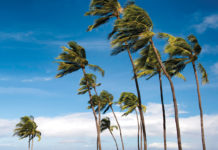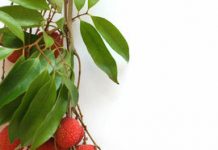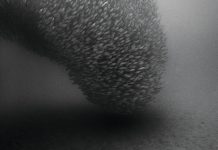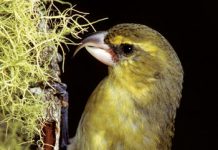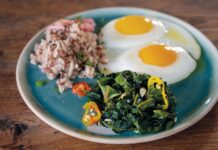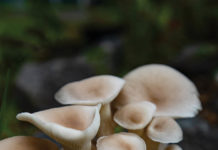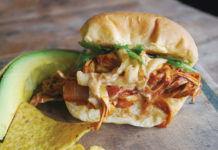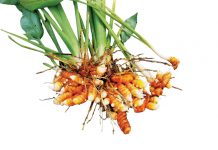Shannon Wianecki
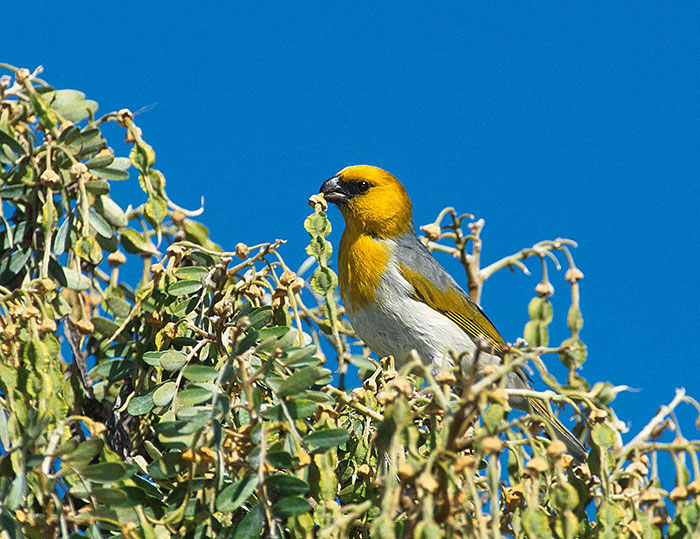 Brilliant golden blossoms drip from the gnarled, silvery branches of mamane trees surrounding the Haleakala National Park visitor center. One of Hawai‘i’s loveliest flowering plants, mamane (Sophora chrysophylla) is endemic to the Islands, meaning it exists naturally nowhere else on earth. When in bloom—as it is about now—mamane is an explosion of color: bursts of yellow petals mingle with or replace pale green leaves whose fine-haired undersides glitter in the sun. Depending on elevation and rainfall, mamane can be a slender shrub or a fifty-foot tree. Ancient Hawaiians sought out larger trees and carved o‘o (digging sticks) and the rails of holua (racing sleds) from the hard, dense wood. This hardy legume has the sweet-pea-like flowers, delicate leaflets, and hanging seedpods associated with that family, which includes peanut, soy, and lentil.
Brilliant golden blossoms drip from the gnarled, silvery branches of mamane trees surrounding the Haleakala National Park visitor center. One of Hawai‘i’s loveliest flowering plants, mamane (Sophora chrysophylla) is endemic to the Islands, meaning it exists naturally nowhere else on earth. When in bloom—as it is about now—mamane is an explosion of color: bursts of yellow petals mingle with or replace pale green leaves whose fine-haired undersides glitter in the sun. Depending on elevation and rainfall, mamane can be a slender shrub or a fifty-foot tree. Ancient Hawaiians sought out larger trees and carved o‘o (digging sticks) and the rails of holua (racing sleds) from the hard, dense wood. This hardy legume has the sweet-pea-like flowers, delicate leaflets, and hanging seedpods associated with that family, which includes peanut, soy, and lentil.
Don’t go snacking on mamane seeds, however, unless you happen to be a palila, one of several types of native Hawaiian honeycreeper. While mamane seeds are toxic to most other birds and animals, they are the main diet of the palila, which evolved a tolerance for the seed’s bitter taste, and a beak designed to pry seeds from woody pods. (Is it mere coincidence that the palila wears a golden face, mamane golden blossoms?)
Springtime on Maui affords excellent opportunities to view mamane’s charismatic display of blossoms, especially at Haleakala National Park’s Skyline Trail, Kaupo Gap, Hosmer’s Grove and Halemau‘u trailhead; and at the Auwahi forest-restoration site. The tree can also be found in subalpine pockets on several Hawaiian Islands, particularly in places where it is protected from goats and deer—introduced feral ungulates that
trample young saplings and fragile root systems.
But you won’t catch a palila flitting in the branches here, though you are likely to see other native birds, such as i‘iwi and ‘apapane, darting in to sip nectar from the yellow flowers. Once abundant throughout the Islands, palila now exist only on the Island of Hawai‘i.

